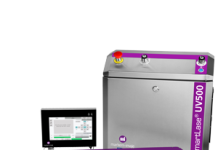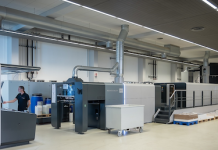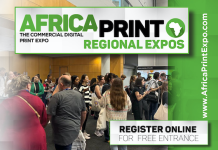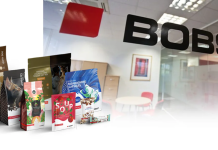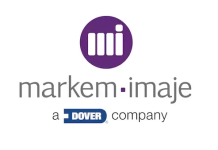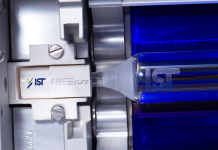In a white paper recently released by Markem-Imaje, locally represented by Pyrotec PackMark, consideration is given to whether GS1-128 barcodes are on track to become the most adopted global standard for retail grocery and foodservice packaging.
There are numerous barcodes to choose from, each with its own unique symbols that perform specific functions for tracking products throughout the supply chain.
Types of barcodes
The symbology of a barcode is its technical details – the width and quantity of bars, character set, and encoding method – in other words, the black and white lines we see on packaging.
Linear barcodes for the packaging industry include:
UPC (Universal Product Code) is the original barcode format. It is linear (comprising of a strip of black bars on a white space above a sequence of numbers) and includes a 12-digit encoded UPC-A. For smaller products, a compressed seven digit encoded variation, UPC-E, has been created.
EAN (European Article Number) barcode is often the first choice for products being sold internationally. Globally accepted, EAN barcodes include an additional digit on each variant, enabling countries around the world to be included in the system. EAN-13 is the original format, and EAN-8 is the compressed format for smaller product packaging.
ITF-14 barcode is a 14-digit barcode commonly used for printing on corrugated cartons because they maintain high print tolerances.
Code 128 is a high-density linear barcode that can be encoded with alphanumeric or numeric-only coding. It is extremely reliable and widely used globally. The GS1-128 can be encoded with more information – such as lot numbers and expiry dates – to improve supply chain traceability and efficiency. It’s ideal for the shipping and packaging industries as an identification code for containers.
Two-dimensional barcodes for the packaging sector include:
QR (quick response) codes consist of black modules spread across a white square grid. They offer fast readability, large storage capacity, and can support different data sets. They make tracking and identifying products easy through the use of cameras and smart phones. Once a QR code is scanned, it instantly links to a website or page that provides product information or purchase options.
DataMatrix barcodes have black-and-white modules spaced over a grid, similar to that of a QR code. The benefit of a DataMatrix barcode is that it has a much smaller footprint, making it effective for logistics or where product whitespace is restricted. They also hold large amounts of easily accessible data that is scanned using cameras or smart phones.
The MaxiCode is an image device-readable symbol for tracking and managing shipment packages. It looks like QR and DataMatrix barcodes with its dots arranged hexagonally in a grid. Because of the way it’s scanned, from virtually any orientation, it’s possible to include primary and secondary messages that include many data types.
PDF417 codes are far more powerful than other 2D barcodes because of the vast data they can store. This rectangular-shaped code can be adjusted by setting the width to determine the height of the data. PDF417 codes can be used for many applications, including on labelling for hazardous materials.
Are GS1-128 barcodes on track to become the preferred standard?
According to Markem-Imaje, because retailers, wholesalers and food service operators are keen to respond swiftly to product safety issues and improve profitability through increased pallet splitting and automation, GS1-128 barcodes are becoming increasingly more attractive. Their capabilities for comprehensive analysis at point of purchase and during distribution and production also make them popular.
Markem-Imaje Americas lead author and engineering manager, Steven Keddie said, 'GS1-128 barcodes have been around since 1989. However, the interest they’re now generating stems from increased pressure and expectations from government and consumer groups regarding traceability and speed of response when something goes wrong. Whether to optimise inventory levels or better match supply to demand, the technology available means that retailers and food service companies are now better positioned to extract value from the extra information available through GS1-128 barcodes.'



